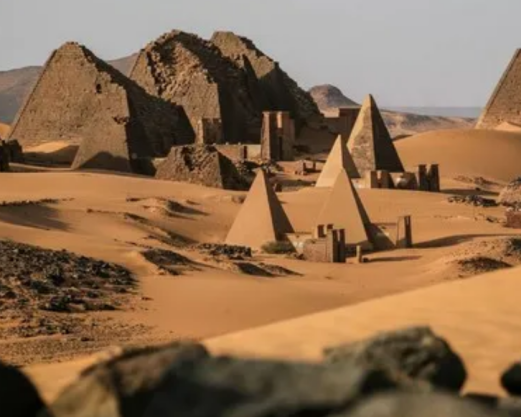Sudan or Egypt: where is the largest collection of pyramids in the world actually located.


Sudan - the true homeland of the pyramids
When we talk about pyramids, many people immediately think of Egypt. But few know that the largest collection of pyramids can be found in a completely different place.
The true birthplace of the pyramids is Sudan, where amidst the sands of the Nubian desert, hundreds of ancient pyramids built by the Kushite civilization have been preserved.
These amazing structures, while less known than their Egyptian counterparts, impress with their quantity, uniqueness, and historical significance.
Sudan has between 220 and 255 pyramids standing on its soil, making it the largest on the list. Bordered by Egypt, this African country easily overshadows the total number of pyramids of its neighbor, which is a subject of debate, but probably reaches around 118 pyramids, according to IFLScience.
Smaller than the Egyptian pyramids, the pyramids of Sudan were built by the rulers of the ancient Kushite kingdom. When Kush became a great power in the 8th century BC in the Nubia region, stretching from Aswan in Egypt to Khartoum in Sudan, they even ruled ancient Egypt during the 25th dynasty, creating a line of kings known as the Black Pharaohs.
The first among them was Piankhi, who successfully invaded Egypt to start a new dynasty around 770 BC, ruling from the Kushite capital Napata. Inspired by the lavish tombs of earlier pharaohs, he decided to be buried similarly. Thus, he became the first member of the kingdom to be interred in a pyramid in the ancient necropolis of El-Kurru in Sudan.
After the Kushites lost control over Egypt, they retreated back to their corner of Nubia, founding a new capital in Meroë. It is here that most Nubian pyramids can be found, with around 200 pointed structures built in the necropolis of the ancient city from the 3rd century BC. Among them are the tombs of 41 royal Kushite individuals.
The Kingdom of Kush thrived until the 4th century AD, when it was brought to an end after conflicts with the Roman army and the neighboring Kingdom of Aksum. In the 1830s, the history of the civilization was rediscovered by archaeologists due to artifacts found by tomb raider Giuseppe Ferlini.
This raider had little regard for Nubian pyramids: he plundered them, causing significant damage and leaving many ancient structures in a deplorable state. And although some pyramids of Meroë have since been restored, most of the monuments continue to deteriorate.
This gradual process of destruction of the pyramids has not improved due to numerous civil wars in Sudan, and the conflicts that have persisted since the 1950s pose a significant barrier to tourism and archaeological funding.
Thus, while the Egyptian pyramids attract millions of visitors each year and hold a deserved place among the most revered and preserved ancient wonders of the world, the Nubian pyramids have remained overlooked and forgotten.
Read also
- Afghanistan Becomes Popular Among Adventure Tourists
- Cheap tours in Ukraine: eight ideas for budget travel up to 2000 UAH
- Turkish Resorts Overrun by Deadly Ticks
- A Place That Impresses: Maro Waterfall - A Natural Pearl of Spain
- Treasures of Queen Bona, Vampires and Ghosts: Which Castle in Ukraine Attracts Like a Magnet
- In Florence, a tourist damaged a 16th-century painting while taking a selfie










